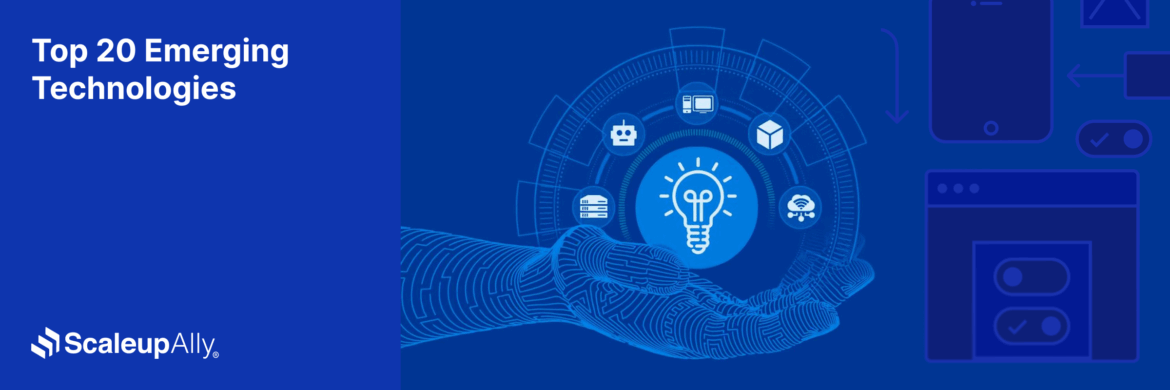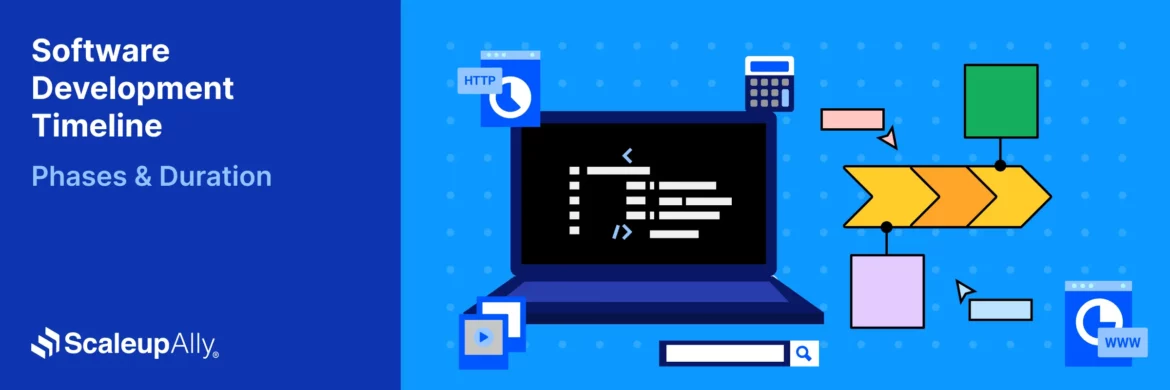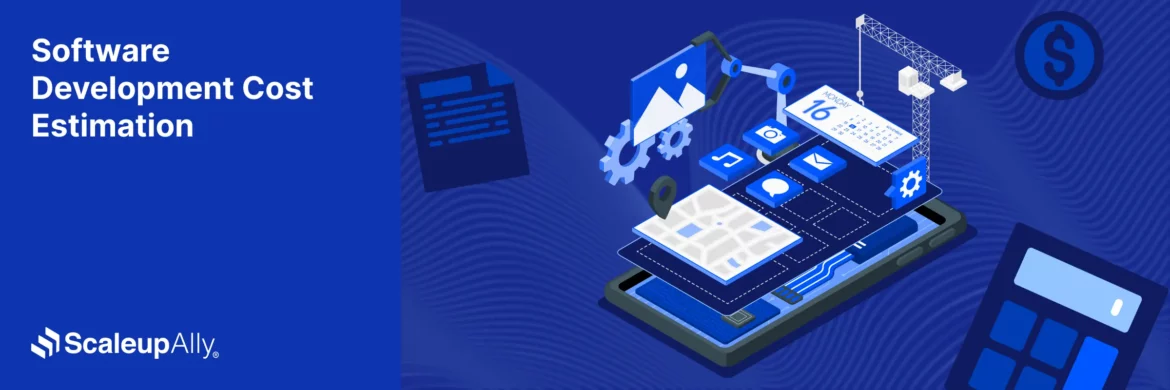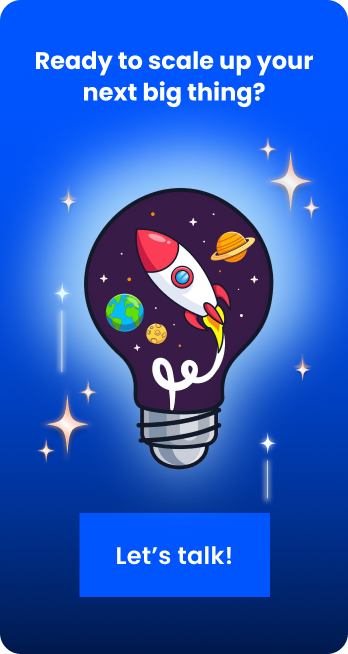
Building Restaurant Management Software in 2025: What Restaurant Owners Need to Know
Suprabhat Sen | November 8, 2025 , 15 min read
Table Of Content
Restaurant management software development is evolving rapidly in 2025 as outdated systems increasingly erode restaurant profits. Restaurant owners are adopting software that handles inventory, staff scheduling, customer data, analytics, etc.
But not all software is created equal. This blog presents an opportunity to learn everything you need to know about restaurant software development.
Key Takeaways
- You can’t afford manual processes or inefficient systems that waste time and money when your restaurant operates on a 3-5% profit margin.
- The best restaurant management software would contain POS, inventory, scheduling, and analytics in one platform.
- A simple system that works during dinner rush should be sought over a feature-rich platform that crashes when you need it most.
- Modern systems use predictive analytics for scheduling, inventory, and demand forecasting to optimize operations automatically.
What is a Restaurant Management Software?
- What is a Restaurant Management Software?
- Why Do Restaurants Need Management Software?
- Key Benefits of a Restaurant Management System?
- Must-Have Features in a Restaurant Management Software
- How to Develop a Restaurant Management Software
- What is the Cost of Developing a Restaurant Management Software?
- Real World Examples for Restaurant Management Software
- Challenges in Developing a Restaurant Management Software
- Best Practices for Developing an Ideal Restaurant Management Software
- How can ScaleupAlly help?
- Conclusion
- Frequently Asked Questions
Restaurant management software is an all-in-one platform that connects your point-of-sale, inventory, financial reports, scheduling, etc, in one place. Instead of separate software for different operations, it unifies them into one. The same platform processes customer orders and tracks ingredient usage.
Why Do Restaurants Need Management Software?
Restaurants operate on a 3-5% profit margin. This means zero room for inefficiency. You may get by handling a restaurant that averages 30-50 orders. But at a minimum of 200 orders a day, inefficiencies start piling up without restaurant management software. When you are unable to track your inventory, you’ll end up wasting food. This eats into your profit margin.
A modern restaurant management software solves this problem. Tracking inventory prevents shortages that force you to remove your best-selling dish from your menu on a packed Saturday night.
But maybe more importantly, with restaurant management software, you’ll spend fewer hours reconciling receipts or manually calculating labor costs. The software handles the tedious tasks, while you focus on improving food quality to create lasting, memorable customer experiences, which are the revenue drivers.
Key Benefits of a Restaurant Management System?
The right restaurant management software will transform your operations in ways you could never have imagined, with the following benefits:
1. Smoother Operations
As mentioned, a restaurant management software eliminates the act of juggling different software just to manage a restaurant. With just one dashboard, you can see the orders coming in, your financial health, and underperforming staff. While your staff take orders, they can check table availability in real-time. Your kitchen staff can also see inventory levels.
With software development for restaurants, you’ll eliminate the paper system. No more handwritten notes that are bound to get lost before the next shift.
2. Real-Time Inventory Management and Cost Control
With Food costs typically consuming 28-35% of restaurant revenue, you must be critical about inventory management. To manage this, modern restaurant management software integrates features that automatically track every ingredient.
The system alerts you when you are almost out of stock, and based on patterns, lets you know when you are overordering. It can also predict your weekly needs based on historical data and upcoming events.
3. Better Customer Experience and Loyalty
It’s quite impossible to track scattered data across your restaurant. With a restaurant management system, you can unify every customer interaction. This will enable you to provide personalized services that build loyalty. For example, your staff can remember that table four always orders extra sauce. Or that your Tuesday regular prefers the corner booth.
Quite apart from that, the software can trigger automatic birthday promotions. All these create a more personalized dining experience.
4. Data-Driven Decision Making and Analytics
Gut feelings might work for seasoning, but business decisions need data. Restaurant management software development focuses heavily on turning raw transaction data into insights you can act on.
With data analytical capabilities, you’ll be able to discover which menu items generate the highest profit margins and at what times of the day the restaurant is busiest. This will help you price and market right instead of guessing or acting blindly.
Must-Have Features in a Restaurant Management Software

Not all restaurant management software is created equal. These differences boil down to features. When evaluating your options on restaurant management software development, ensure that the following are non-negotiable:
1. Comprehensive Point of Sale (POS) Integration
Your POS system is the heart of every transaction. However, the POS shouldn’t be basic. The system should support tableside ordering on mobile devices and quick table turns during busy periods. Restaurants, moreover, have different styles. Hence, look for POS features that can handle your service style (fast-casual counter service, full-service dining, or quick-service drive-through operations).
2. Advanced Inventory Management and Procurement
Another feature your management software must have is inventory management. The software should be able to track inventory in real-time, automatically deduct items as orders are processed, and predict future needs based on sales patterns and seasonal trends.
It should also alert you to low stock levels, as well as place orders automatically when stock is running low using Agentic AI.
3. Customer Relationship Management (CRM)
You’ll drive repeat business and higher average tickets to your restaurant if you understand your customers and can predict their behaviour. In that sense, restaurant management software should maintain detailed customer profiles. This should include order history, preferences, dietary restrictions, and visit frequency patterns.
The CRM needs to support loyalty programs and promotions based on customer behaviour. Integration with reservation systems and feedback management helps create a complete picture of the customer experience.
4. Financial Reporting and Analytics Dashboard
Data without actionable insights is worthless. Your restaurant management software development should include comprehensive reporting. The aim is to track key performance indicators like food cost percentages, average ticket size, etc.
5. Multi-Location Management
For growing operations, restaurant chain software development must maintain consistency and control across multiple branches. It should be able to compare performance metrics across locations. Location-specific customization, centralized inventory management with location-specific adjustments, and consolidated financial reporting are also necessary.
6. Third-Party Integration Capabilities
Due to some limitations, your restaurant management software may not include every feature. In addition, it is not best practice to build certain features from scratch when you could easily integrate them. Delivery platform and accounting software, such as QuickBooks, are examples.
For that matter, the system needs robust API capabilities that will allow for custom integrations with tools your operation might require. This ensures your software adapts as your business grows.
How to Develop a Restaurant Management Software
Building a restaurant management software solution isn’t just about writing code—it’s about creating a tool that actually helps restaurant teams work smarter and faster. Here’s how you can build a powerful system that blends business insight, user-focused design, and the right tech to simplify restaurant operations from end to end.
1. Understand What Matters Most
Before diving into development, clarify the software’s core purpose. Your goals will likely include:
- Simplifying the order and billing process
- Managing table reservations and assignments efficiently
- Keeping track of inventory and supplier relationships
- Handling staff schedules, time tracking, and payroll
- Monitoring sales, expenses, and profits in real time
To build something truly useful, talk to the people who will use it—restaurant owners, managers, servers, and kitchen staff. Their pain points will guide your development process.
2. Pick the Right Architecture
The structure of your software matters. Choose one based on your specific needs:
- Cloud-based systems work well for restaurants with multiple locations or remote management needs.
- On-premise or hybrid setups might be better for smaller venues or those concerned with internet reliability and data privacy.
Make sure your architecture is modular so you can add features like loyalty programs or delivery integrations without rebuilding everything.
3. Make It Simple and Intuitive
In a restaurant, there’s no time to fumble through a confusing interface. Design for speed and clarity:
- Role-based dashboards for different users (cashiers, chefs, managers)
- Quick access to essential functions like billing, order tracking, and table status
- Interfaces that work smoothly on tablets or handhelds
A clean, intuitive design isn’t just nice to have—it’s key to user adoption and day-to-day efficiency.
4. Choose a Future-Proof Tech Stack
Your tech choices should match your goals for performance and growth:
- Frontend: React, Vue.js, or Angular for responsive user interfaces
- Backend: Node.js, .NET, or Django for robust server logic
- Database: PostgreSQL or MongoDB for handling real-time data
- Integrations: Payment gateways like Stripe or Razorpay, delivery platforms like Zomato, and accounting tools
Also, consider tools that support data analytics—you’ll want to provide restaurant owners with insights on inventory usage and sales trends.
5. Break It Into Key Modules
Divide development into manageable components:
- POS & Billing: Fast order taking, receipt printing, split payments
- Inventory Management: Alerts for low stock, supplier tracking
- Reservations: Real-time table availability and booking system
- Staff Management: Shift scheduling, attendance, payroll features
- Analytics: Dashboards showing sales, costs, and key metrics
All these modules should work together smoothly to give users a unified experience.
6. Build With Security in Mind
You’ll be handling sensitive data—customer contact details, payment info, and employee records. Protect it by:
- Using HTTPS and encryption
- Setting up role-based access
- Following PCI DSS and GDPR standards
Don’t treat security as an afterthought—make it a priority from day one.
7. Test It Like It’s the Dinner Rush
Put your software through real-world tests:
- Simulate busy times to check how fast and reliable the POS is
- Verify that data syncs properly across devices
- Make sure reports are accurate and easy to interpret
Run pilot tests in real restaurants to see how it performs in a live environment.
8. Launch, Train, and Keep Evolving
Once your software is live:
- Offer training so staff can hit the ground running
- Monitor system performance and uptime
- Collect user feedback and update regularly—think features like mobile ordering, loyalty tracking, or AI-powered sales forecasting
The best restaurant management systems don’t just solve today’s problems—they evolve with the industry.
What is the Cost of Developing a Restaurant Management Software?
Just as restaurant management software varies, so does the cost. Cost depends on feature set, development approach, and, largely, complexity. For a ballpark figure, a basic system can cost anywhere between $30,000 to $100,000. A comprehensive one could exceed $300,000. However, the upfront investment doesn’t just end there. You need ongoing maintenance and periodic feature updates. These typically add 15-25% of the initial cost annually.
The table below is a complete cost breakdown.
| Type of Software | Development Cost | Annual Maintenance Fee | Additional Charges (If any) |
|---|---|---|---|
| Basic POS Integration | $30,000 - $80,000 | $7,500 - $15,000 | Third-party API fees ($200-500/month), Payment processing fees (2.5-3.5% per transaction) |
| Mid-Range Management System | $100,000 - $300,000 | $22,500 - $45,000 | Cloud hosting ($500-2,000/month), Additional user licenses ($25-50/user/month) |
| Comprehensive Enterprise Solution | $400,000 - $800,000 | $60,000 - $120,000 | Multi-location licensing ($1,000-5,000/location/month), Advanced analytics modules ($500-2,000/month) |
Factors Affecting Development Cost
- Complexity of Features
The number of features for the platform impacts costs. A basic POS functionality will cost far less than comprehensive systems. Other features, including inventory management and CRM, and analytics, add development time.
- Integration Requirements
Third-party integrations with payment processors, delivery platforms, accounting software, etc., increases development costs. Restaurant management software often requires integrations across multiple vendors and legacy systems.
- Development Team Location and Expertise
This is one of the factors you must consider most. For example, offshore development teams might cost $25-75/hour compared to $100-200/hour for domestic developers. See the difference? Your choice most definitely impacts cost. So you must evaluate and choose carefully. Specialized knowledge of restaurant operations, compliance requirements, and integration challenges justifies higher development costs but reduces long-term risks.
Real World Examples for Restaurant Management Software
Restaurant owners who are looking at their software options in 2025 face a market dominated by comprehensive platforms that integrate everything. The most successful implementations show measurable improvements including 30% revenue increases. Here are some restaurant management software options:
1. Toast
Toast serves about 120,000 restaurant locations with $1.5 billion in annual recurring revenue and 29% year-over-year growth. Toast’s platform includes spill-proof hardware, automated tip-sharing, and profit margin calculators that integrate overhead costs.
2. Square
Square positions itself in the small-to-medium business segment. It is easy to use and comes with a freemium model. The platform serves 4 million businesses worldwide. Recent implementations show 60% increase in order value after Square Kiosk deployment.
3. Lightspeed Commerce
This platform targets full-service restaurants and multi-location operations. It contains advanced inventory management and deep analytics capabilities. Their acquisition of Upserve for $350 million expanded their U.S. presence significantly. According to Lightspeed, the platform operates 40% faster than competitors.
Challenges in Developing a Restaurant Management Software
The unique nature of the hospitality industry creates certain challenges that do not exist in other industries. To be successful, you must address these challenges from day one, and not as an afterthought during testing. Here are the critical obstacles that you must keep in mind:
1. Complex Integration Requirements
Restaurant operations involve dozens of system integrations. Your software needs to integrate with payment processors, delivery platforms, loyalty programs, etc. And all these integrations must maintain real-time data synchronization. One failed integration can break your entire workflow during peak service hours.
2. Diverse Hardware and Platform Compatibility
Restaurant environments are harsh on technology. Because of spills, heat, steam, and constant use, standard hardware deteriorates quickly. Your software must work reliably on specialized restaurant hardware.
You also need to think about mobile compatibility. Restaurant staff need access to key functions on smartphones and tablets. Therefore, the software requires a responsive design that works equally well on a 5-inch phone screen and a 21-inch terminal display.
3. User Experience Design for High-Stress Environments
Your software needs to be intuitive enough for new employees to learn quickly, while powerful enough for experienced staff to work efficiently. Features must be accessible through simple, logical interfaces that work under pressure. Each interface must be optimized for its specific use case while maintaining consistent design principles.
Best Practices for Developing an Ideal Restaurant Management Software
Here are the non-negotiable principles that should guide every development decision:
1. Start with Deep Industry Research and User Validation
Before you ask developers to write a single line of code, spend significant time in actual restaurant operations. Think of it as an internship. Shadow servers, watch kitchen operations, and observe how managers handle daily tasks. Software built by developers who have never worked in restaurants consistently fails because it doesn’t address real operational needs.
Also, interview users with different restaurant segments. Each has distinct pain points that generic software can’t address. A pizza delivery operation has completely different needs than a wine bar, and your software must accommodate these variations.
2. Design for Reliability First, Features Second
Restaurant operations can’t afford downtime. Internet connections fail, especially in older restaurant buildings or during storms. Your system must continue processing orders, tracking inventory, and managing operations even when connectivity is lost. Plan for automatic data synchronization when connections are restored. Also, core functions like order processing and payment should continue working even if reporting or analytics features become temporarily unavailable.
3. Plan for Ongoing Support and Continuous Improvement
Restaurant management software requires continuous updates, feature improvements, and technical support that goes far beyond typical software products. Plan your development and business model around providing excellent ongoing service rather than treating software as a one-time product.
Implement user feedback collection systems that continuously gather input from restaurant staff. The best feature ideas come from people using your software daily in real operational environments. Make it easy for users to suggest improvements and report issues.
How can ScaleupAlly help?
Restaurant software projects fail because developers don’t understand how restaurants work. ScaleupAlly is different. We don’t build generic solutions, but reliable, user-friendly software that improves efficiency, reduces costs, and drives growth for restaurant businesses. Whether you need custom integrations, mobile solutions, or complete platform development, we are the go-to for restaurant technology that your staff will use and love.
Conclusion
Restaurant management software isn’t optional in 2025. The right system will make you efficient and provide you with data insights to stay profitable. Don’t let outdated processes hold back your operation.
To build restaurant software that actually works, contact ScaleupAlly today and let’s discuss your vision.
Frequently Asked Questions
Q: What are the essential features to include in a restaurant management software?
Core features include comprehensive POS integration, real-time inventory management, staff scheduling, customer relationship management, financial reporting, and third-party integrations with delivery platforms and accounting software for complete operational control.
Q: How much does it cost to build a restaurant management software?
Development costs range from $30,000-$100,000 for basic systems to $300,000+ for enterprise solutions. Factor in annual maintenance fees (15-25% of development cost) and additional charges for integrations, hosting, and support services.
Q: How long does it take to build a restaurant management software?
Basic restaurant management software takes 6-12 months to develop, while comprehensive enterprise solutions require 18-24 months. Timeline depends on feature complexity, integration requirements, security compliance, and testing phases for reliable deployment.
Related Blogs

Top 20 Emerging Technologies of 2026
Discover the top 20 emerging technologies of 2026. Explore which innovations are driving change across healthcare, finance, manufacturing, and other crucial industries.
ScaleupAlly Team
Dec 16 ,
9 min read

Software Development Timeline: Phases, Duration & Estimation Guide
Understand the software development timeline with phase durations, key factors, hidden delays, and practical methods to estimate project time.
Suprabhat Sen
Nov 29 ,
16 min read

Software Development Cost Estimation Guide: What’s Included & What Affects the Price
Explore software development cost components, major pricing factors, and practical estimation methods to plan your project accurately from start to finish.
Suprabhat Sen
Nov 29 ,
14 min read


